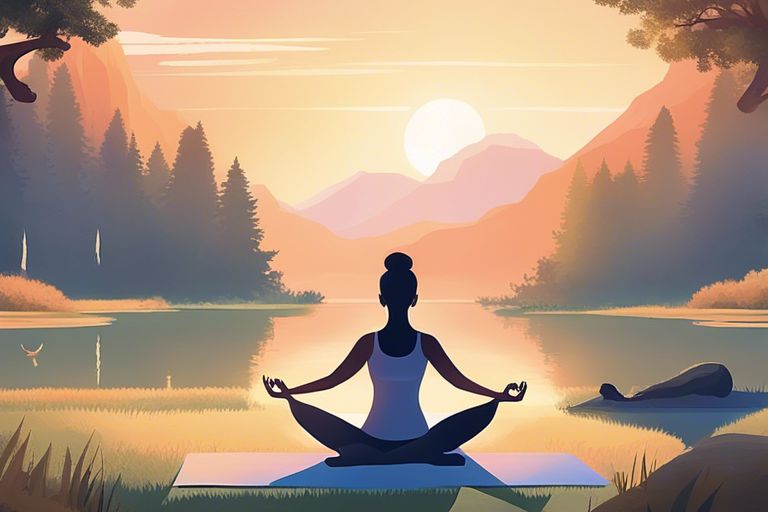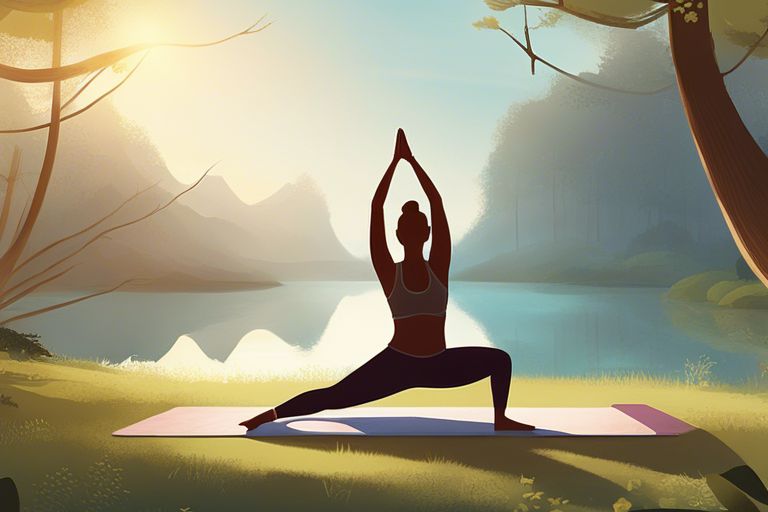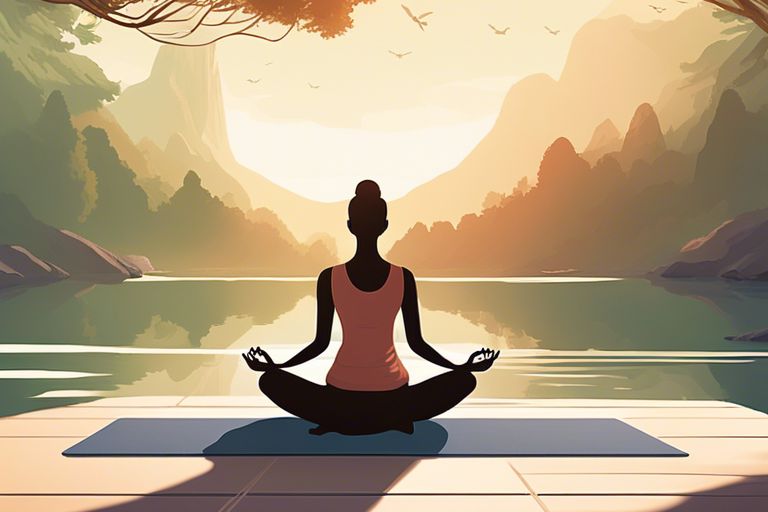This comprehensive guide will show you how to seamlessly integrate the benefits of yoga into your existing fitness routine. With step-by-step instructions and tips for beginners, you will learn how to improve flexibility, build strength, and enhance your overall well-being through yoga practice. Discover the key poses to include in your workouts and how to combine yoga with other forms of exercise for maximum results. Say goodbye to stiffness and stress, and hello to a more balanced, healthier you!
Key Takeaways:
- Start Slow: When incorporating yoga into your fitness routine, start slowly to allow your body to properly adjust to the new movements and demands.
- Focus on Breathing: Pay attention to your breath during yoga practice to help you relax, reduce stress, and improve your overall well-being.
- Listen to Your Body: Be mindful of your body’s limitations and respect them. Avoid pushing yourself too hard and risking injury.
1. Choose a suitable yoga style for your fitness goals.
2. Start with beginner-friendly poses and gradually progress.
3. Dedicate a consistent schedule for yoga practice sessions.
4. Incorporate a variety of breathing techniques for relaxation and focus.
5. Combine yoga with other forms of exercise for a balanced routine.
6. Listen to your body, rest when needed, and stay consistent.
Understanding the Types of Yoga
Your fitness journey can greatly benefit from the incorporation of various types of yoga into your routine. Understanding the differences between the different styles can help you choose the one that best aligns with your fitness goals and preferences. Here is a breakdown of some popular types of yoga:
| Hatha Yoga | Vinyasa Yoga |
| Ashtanga Yoga | Iyengar Yoga |
| Kundalini Yoga | Restorative Yoga |
Hatha Yoga
Little is known as the foundation of all yoga styles. Hatha yoga focuses on the basic postures and breathing techniques. It is a great starting point for beginners as it provides a gentle introduction to the core aspects of yoga practice.
Vinyasa Yoga
Understanding Vinyasa yoga involves a series of poses that flow smoothly into one another, synchronized with breath. This style is often referred to as “flow” yoga because of the smooth way the poses run together. Vinyasa is more dynamic and vigorous, making it a great choice for those looking for a more challenging practice.
Ashtanga Yoga
You may be familiar with Ashtanga yoga, a physically demanding style that follows a specific sequence of postures. This vigorous practice focuses on continuous movement and breath, resulting in a detoxifying sweat and improved strength and flexibility.
After a challenging Ashtanga yoga session, you will feel invigorated and energized, ready to take on whatever comes your way.
Iyengar Yoga
The Iyengar style of yoga is characterized by its focus on detail, precision, and alignment in the performance of posture and breath control. Props such as blocks, straps, blankets, and pillows are often used to help beginners in the practice and to deepen their poses.
The Iyengar method can be therapeutic for specific conditions and beneficial for all body types. It is known for its attention to anatomical detail and precise alignment of postures.
Kundalini Yoga
Kundalini Yoga is a blend of Bhakti Yoga (the yogic practice of devotion and chanting), Raja Yoga (the practice of mediation), and Shakti Yoga (for the expression of power and energy). A typical class includes chanting, dynamic breathing techniques, meditation, and various yoga postures.
A Kundalini yoga session can be a transformative experience, enhancing your spiritual awareness and physical strength.
Restorative Yoga
On a busy day, Restorative yoga can be a welcomed retreat. This gentle and relaxing practice involves holding poses for an extended period, typically using props to support the body. It is designed to help you relax and release tension, promoting deep relaxation and rejuvenation.
Restorative yoga is especially beneficial for those recovering from injuries or dealing with chronic pain. It can help you recharge and rebalance your body and mind.
Factors to Consider Before Starting a Yoga Practice
Once again, before venturing into your yoga practice, there are several factors you should consider to ensure a safe and effective experience. Here are some key points to keep in mind:
Fitness Level and Goals
Some important aspects to consider are your current fitness level and the goals you want to achieve through yoga. If you are a beginner or have certain limitations, it’s crucial to start with basic classes and gradually progress to more advanced levels. Your goals could be anything from improving flexibility and strength to reducing stress and achieving inner peace.
Age and Health Conditions
One critical factor to consider is your age and any existing health conditions. Yoga is a versatile practice that can be modified to suit individuals of all ages and physical abilities. However, it is important to consult with your healthcare provider before starting yoga if you have any medical conditions or concerns.
To safeguard your well-being, inform your instructor about any health issues or limitations you may have, so they can guide you appropriately during the practice.
Availability of Time and Space
Time is a significant factor when considering incorporating yoga into your fitness routine. Assess how much time you can dedicate to yoga sessions and whether you have adequate space at home or access to a studio for classes.
Starting with shorter sessions and gradually increasing the duration can help you establish a sustainable yoga practice that fits seamlessly into your routine.
Budget and Investment
Availability of financial resources is crucial when considering yoga as part of your fitness regimen. Yoga classes, equipment, and attire are some of the investments you may need to make. It’s important to research affordable options and consider how much you are willing to invest in your wellness.

Tips for Choosing the Right Yoga Style for You
Despite the growing popularity of yoga, choosing the right yoga style for you can be overwhelming with so many options available. Here are some tips to help you navigate through the various styles and find the one that best suits your needs:
Identifying Your Fitness Goals
While considering the right yoga style for you, it is crucial to identify your fitness goals. Are you looking to build strength, increase flexibility, reduce stress, or improve your overall well-being? Different yoga styles focus on different aspects, so knowing what you want to achieve can help narrow down your options and find the style that aligns with your goals.
Considering Your Lifestyle and Schedule
An important factor to consider when choosing a yoga style is your lifestyle and schedule. Some styles, like Ashtanga or Power Yoga, are more physically demanding and may require a significant time commitment, while others, such as Hatha or Restorative Yoga, are more gentle and relaxing. You should choose a style that fits into your daily routine and complements your lifestyle to ensure long-term consistency.
Style preferences, such as a preference for a meditative practice versus a more dynamic flow, should also guide your choice of a yoga style. Different people are drawn to various styles, so it’s crucial to find one that resonates with you to maintain your motivation and enjoyment.
Researching Local Yoga Studios and Instructors
On top of considering your goals and lifestyle, researching local yoga studios and instructors can help you make an informed decision. Look for studios that offer a variety of styles and classes to experiment with. Read reviews, ask for recommendations, and visit studios to get a feel for the environment and teaching styles. Finding a studio and instructor that you connect with can greatly enhance your yoga experience and keep you motivated to continue your practice.
Trying Out Different Classes and Styles
Fitness is crucial, trying out different classes and styles. Trying a variety of classes, from Vinyasa to Yin Yoga, allows you to experience different yoga styles and find what works best for you. Each class and instructor offers a unique approach, so don’t hesitate to explore and experiment. This way, you can discover the style that not only benefits your fitness goals but also brings you joy and fulfillment.
Considering your preferences, including music, ambiance, and instructor cues, can help you pinpoint the yoga style that resonates with you most. Note, the journey of finding the right yoga style is a personal one, so take your time to explore and enjoy the process.
A Step-by-Step Guide to Incorporating Yoga into Your Fitness Regimen
To successfully integrate yoga into your fitness routine, you need to follow a structured approach. Here is a step-by-step guide to help you seamlessly incorporate yoga into your fitness regimen:
Setting Realistic Goals and Expectations
There’s no denying that starting a new fitness routine can be exciting, but it’s crucial to set realistic goals and manage your expectations. Remember that progress takes time, so be patient with yourself. It’s crucial to understand that yoga is not just about physical fitness but also about mental well-being. Focus on how the practice makes you feel rather than just how it makes you look.
Creating a Yoga Practice Schedule
Yoga is a practice that thrives on consistency, so establish a yoga practice schedule that works for you. Determine how many days a week you can commit to practicing yoga and set aside specific times for your sessions. Whether it’s early morning or before bedtime, find a time that fits into your routine and stick to it. This routine will help you stay dedicated and make progress in your practice.
Yoga at home also grants you flexibility in choosing your practice time, duration, and type of yoga to suit your mood and energy levels. Plus, with virtual classes and tutorials readily available, you can access guided sessions whenever it works best for you.
Investing in Essential Yoga Equipment
As you research deeper into your yoga practice, consider investing in some crucial yoga equipment to enhance your experience. A quality yoga mat, blocks, straps, and a bolster can help support and deepen your practice. These props can assist you in achieving proper alignment, preventing injuries, and exploring advanced poses with stability.
Understanding the significance of yoga props and how they can improve your practice will enrich your experience on the mat. Utilizing props effectively can also help you progress in challenging poses and make your practice more enjoyable and fulfilling.
Finding a Yoga Buddy or Accountability Partner
You don’t have to launch on your yoga journey alone. Finding a yoga buddy or accountability partner can provide you with the motivation and support you need to stay consistent in your practice. Whether it’s joining a virtual yoga class together or checking in on each other’s progress, having a partner can make your yoga experience more engaging and fun.
It’s crucial to find someone who shares your passion for yoga and understands your goals to keep each other accountable and motivated. Having a buddy to share your achievements and challenges with can foster a sense of community and help you stay committed to your practice.
Tracking Progress and Celebrating Milestones
An integral part of incorporating yoga into your fitness routine is monitoring your progress and celebrating your milestones. Keep a yoga journal to track your practice, jot down how you feel after each session, and note any improvements in your strength, flexibility, or mental clarity. Reflecting on your journey can inspire you to keep going and recognize how far you’ve come in your practice.
Plus, don’t forget to celebrate your achievements along the way. Whether it’s holding a challenging pose for longer, mastering a new sequence, or simply showing up on your mat consistently, each milestone is worth acknowledging and celebrating. This positive reinforcement will motivate you to continue growing in your practice and embracing the transformative power of yoga.

Pros and Cons of Incorporating Yoga into Your Fitness Regimen
After incorporating yoga into your fitness regimen, it’s important to weigh the pros and cons to understand how it can benefit or challenge you. Here is a breakdown to help you make an informed decision:
| Pros | Cons |
| Improves flexibility and balance | Potential for injury if not done correctly |
| Strengthens muscles and increases endurance | May not be as effective for weight loss as high-intensity workouts |
| Reduces stress and promotes relaxation | Time-consuming to see significant physical changes |
| Enhances focus and concentration | Requires consistency and dedication to reap benefits |
| Can be practiced anywhere with minimal equipment | Not suitable for individuals with certain health conditions |
Physical Benefits of Yoga
Regimen, when you incorporate yoga into your fitness routine, you can experience various physical benefits such as improved flexibility, stronger muscles, and better endurance. If you want to learn more about how to integrate yoga into your workout routine, check out How to Incorporate Yoga Into Your Workout Routine.
Mental and Emotional Benefits of Yoga
While doing yoga, you’ll not only see physical changes but also experience mental and emotional benefits like reduced stress and increased relaxation. Taking the time to focus on your breath and movement can help you cultivate mindfulness and improve your overall well-being.
Potential Drawbacks and Challenges
The potential drawbacks and challenges of practicing yoga include the risk of injury if poses are not done correctly and the need for consistency to see significant physical changes. It’s important to listen to your body and practice proper form to avoid any negative impacts on your body.
Common Misconceptions About Yoga
With yoga, there are common misconceptions that may deter you from incorporating it into your fitness routine. Some people may believe that yoga is just stretching and not a real workout, but in reality, it can provide a great physical and mental challenge. Additionally, there is a misconception that you need to be flexible to do yoga, but the practice is meant to help you improve flexibility over time.

Overcoming Common Obstacles and Plateaus
Dealing with Injury or Setbacks
Not all fitness journeys are smooth sailing, and encountering injuries or setbacks is not uncommon. With yoga, you have a versatile practice that can be modified to work around injuries. Listen to your body and communicate with your yoga instructor about any limitations you may have. They can suggest alternative poses or adjustments to help you continue your practice safely.
Staying Motivated and Avoiding Burnout
Not seeing immediate results or hitting a plateau can be discouraging, leading to a lack of motivation. Staying consistent is key. Set realistic goals and celebrate small victories along the way. Vary your routine by trying different styles of yoga or incorporating other forms of exercise to prevent burnout.
It can also be helpful to find a workout buddy or join a yoga community to stay motivated and accountable. Remember to listen to your body and take rest days when needed to avoid burnout.
Modifying Yoga Poses for Different Fitness Levels
One of the great things about yoga is that it can be adapted to suit individuals of all fitness levels. Whether you are a beginner or an experienced practitioner, there are adjustments that can be made to make the practice more accessible or challenging. Don’t be afraid to use props like blocks or straps to help you get into poses comfortably.
Finding Inspiration and New Challenges
An important aspect of any fitness regimen is finding ways to keep it exciting and challenging. Different yoga styles like power yoga or aerial yoga can introduce new elements to your practice and keep you inspired. Consider setting a goal to master a challenging pose or participate in a yoga workshop to continue growing in your practice.
Summing up
Ultimately, incorporating yoga into your fitness regimen can bring significant benefits to your overall health and well-being. By following the important how-to guide provided, you can seamlessly integrate yoga into your routine, whether you are a beginner or have been practicing for a while. Remember to listen to your body, be consistent, and enjoy the process as you cultivate a stronger mind-body connection through the practice of yoga.
Q: Why should I incorporate yoga into my fitness regimen?
A: Yoga offers a wide range of physical and mental benefits that can complement your existing fitness routine. It improves flexibility, strength, balance, and posture, while also reducing stress and promoting relaxation.
Q: How often should I practice yoga for it to be effective?
A: To experience the benefits of yoga, it is recommended to practice at least 2-3 times per week. Consistency is key, so finding a routine that works for you and sticking to it will help you see improvements in both your physical and mental well-being.
Q: What are some tips for beginners looking to incorporate yoga into their fitness routine?
A: Start slowly and listen to your body. Choose beginner-friendly classes or instructional videos to learn proper alignment and technique. Focus on your breath and try to stay present during your practice. As you progress, you can explore different styles of yoga and challenge yourself with more advanced poses.











